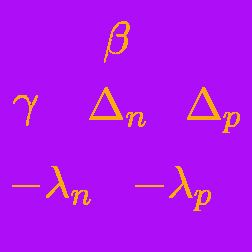Time-saving steps
A widely used method to study nuclear dynamics in heavy-ion scattering, fusion and fission phenomena, and giant-resonances in nuclei is time-dependent Hartree-Fock (TDHF) calculations, which assume that the wave function of the system consists of time-evolving occupied orbitals. Time-dependent Hartree-Fock-Bogoliubov (TDHFB) calculations go a step further, in that they include pairing interactions between particles, but the calculations require a much larger set of quasiparticle orbits. This makes the calculations almost prohibitively time consuming and has so far blocked progress in treating the problem of nuclear superfluidity.
Writing in Physical Review C, Shuichiro Ebata and colleagues at the RIKEN Nishina Center, Wako, and the University of Tsukuba, both in Japan, have formulated TDHFB in the so-called canonical basis. By making certain approximations, they develop a set of equations that can be solved on a three-dimensional mesh in a time comparable to TDHF calculations. The authors make a successful test of their calculation scheme for the response of a nucleus to an electromagnetic probe, namely, the isovector-dipole and isoscalar-quadrupole strength distributions in isotopes of neon and magnesium. (This is possible because the small-amplitude limit of TDHFB is identical to the quasiparticle-random-phase-approximation (QRPA), for which the authors have already developed calculation codes.) A possible application of the method, namely, to yield a fully microscopic treatment of fission, could provide a real breakthrough in nuclear physics research. – John Millener





